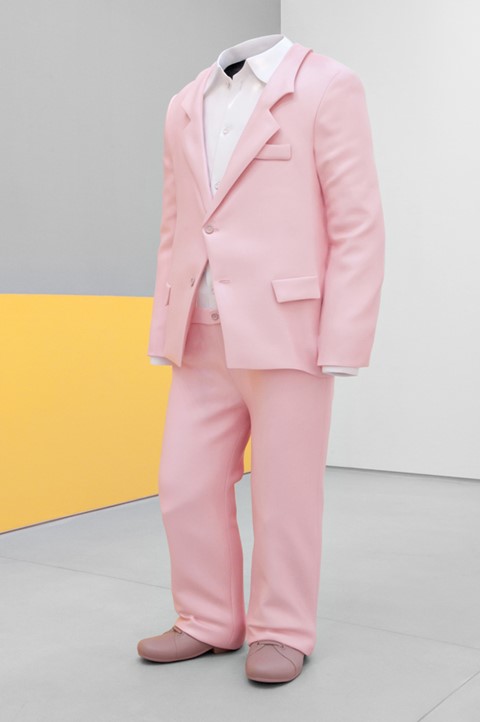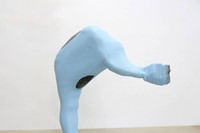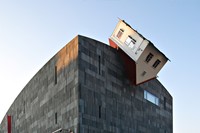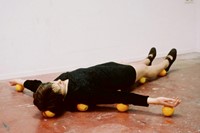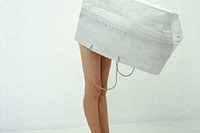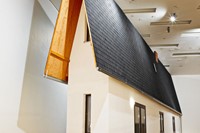Fat, strange, narrow are words we may not want to associate with ourselves. Well, maybe we do, but they are certainly the words that can be used to describe the parallel universe that the artist Erwin Wurm uses in his works, a world where a real

Fat, strange, narrow are words we may not want to associate with ourselves, but they are certainly the words that can be used to describe the parallel universe that the artist Erwin Wurm uses in his works. His is a world where a real house, or a car, can be obese, or bent, and a small house can be perched, like a fantastic headpiece on Anna Piaggi's head, atop the Museum Moderner Kunst.
His work integrates a kind of strange beauty into our sometimes banal existence, as anyone who visits his solo exhibition, Yes Biological, at Galerie Thaddaeus Ropac in Paris, can attest. Sculpture and performance are married in his video, 59 Positions, in which people pose in unusual positions and freeze as One Minute Sculptures. In Yes Biological, these poses are shown as monumental sculptures, either individually or as groups of sculptures on a greatly reduced scale. Wurm has expressed a belief in the importance of sarcasm and humour, and childlike curiosity, and this can be seen in an oversized police cap which invites the viewer to stand underneath it. One is reminded of trying on your mother's high heels or father's blazers as a child, as the space itself becomes the canvas.
All things 1990s may be the epitome of cool today, but it was then that Wurm, who lives and works in Vienna and Limberg, made an enduring impression on the art world (and fashion world — think of Victoria Beckham inside the Marc Jacobs carrier bag for SS08) with his aforementioned One Minute Sculptures. Performers acted in strange settings, diving into a crate or even executing push-ups on balanced teacups. It appeared to stress that sculpture, art and performance could live together peacefully and allowed viewers to become part of the works themselves.
More attention followed after his presentation of beautiful sculptures of obese or overstuffed houses and cars, which seemed to help alter the direction of contemporary sculpture. More recently, this year, he presented an exhibition that included Narrow House, a fully furnished, house that spectators could enter and was modelled after the home Wurm grew up in. Despite its constrictive quality, it had a tangible freedom, as it seemed possible to transport it anywhere. Wurm's box sculptures that resemble humans, dressed in cardigans, suits and shirts, also made an appearance. Incredibly striking, they look as though they might live and breathe at any moment. As Erwin Wurm builds his fantastic world and we question our beliefs, even our bodies, it is hard not to become a believer, too.
Yes Biological at Galerie Thaddaeus Ropac, Paris runs until 12 February.
Text by Michael Kowalinski
